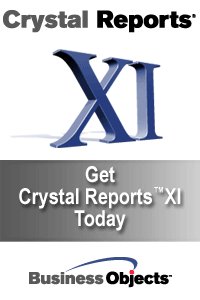
When you get good at something, you have to have extremely compelling reasons to change. For eleven years, I was very successful in building my own custom applications development business (Artifax Applications) using a technology from Microsoft that worked extremely well for both me and my clients. The database was Microsoft Access, the programming language was Visual Basic for Applications, and the reporting tool was the Report Designer in Access.
One of the ways to ensure success in custom applications development is to become expert in report design. I guess I did that well, because my confidence level in being able to create and deploy extremely complex reports was almost arrogance. If a client could give me proper requirements and could thoroughly document the business logic, then my conceit was that I could build the report. And I did…again and again.
After I became involved with the company with which I am currently employed as an IT Manager, I found myself facing compelling reasons to change. The Enterprise Resource Planning (ERP) software we implemented there used Crystal Reports v8.5. Yes, it was a powerful alternative to what I had become accustomed to using, but there were many occasions when I found myself cursing under my breath (and sometimes out loud) at the constraints built into the design of the product. The user interface was clumsy in comparison. The lack of a full-fledged class-based programming language and custom library environment was very frustrating. The limitation of a single sub-report layer without any further nesting possible bewildered me. And so it goes.
Still, the most compelling reason to change was very simple and pretty much undeniable. The ERP package made the decision for me. Crystal v8.5 was supported and fully integrated into the vendor’s modules.
Now, things are changing again. The vendor is talking about options. Upgrade to Crystal 9 or 11 for .NET. And although Microsoft Access still works well for custom SQL pass-through queries, form design and report design based on ODBC data sources, it is not integrated into the latest release of the ERP. SQL Server Report Services isn’t really an option either, even though the object-based report model and XML report definitions it sports sounds terribly avant garde.
So, when it comes down to it, the choice isn’t all that tough. Crystal 11 for .NET, here we come.

No comments:
Post a Comment